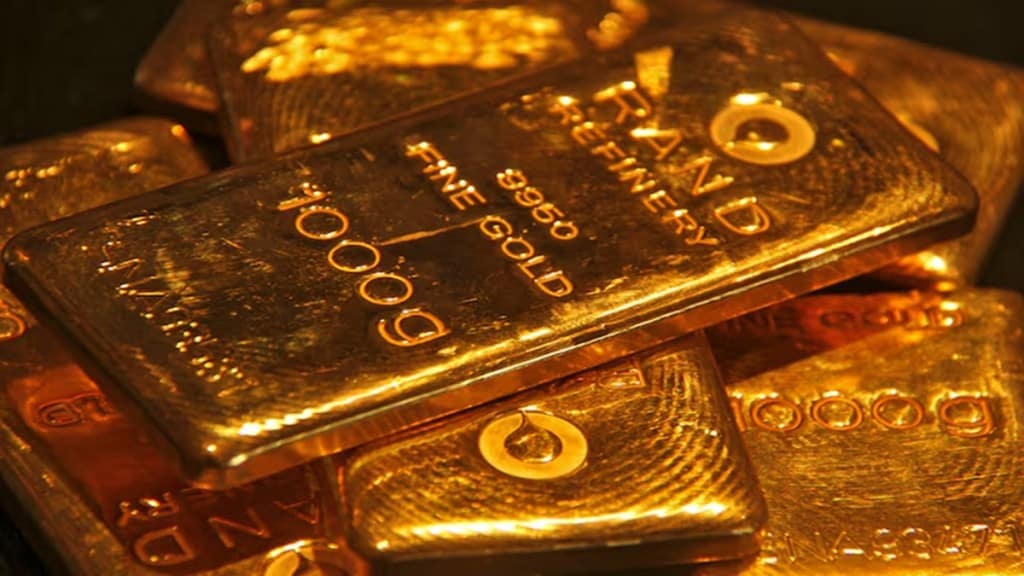Gold’s performance has caught many investors on the wrong foot. Many investors are taking note of the bull run in gold after prices have skyrocketed 100% in the last 24 months, and 200% since 2020.
In October 2023, the gold price in the international market was $1,900. Today, gold trades at $3,860.
Gold price in India in October 2023 was Rs 61,000, while today the yellow metal trades at Rs 1,17,290 in the Indian market.
In the last one year, gold has been up over 45%; so far this year, it has jumped over 47%!
The FOMC – fear of missing out – is slowly creeping in, and the late comers want to cash on as well.
Buying Gold Jewellery
Still, not all would have missed the rally. All those who have physical gold in the form of jewellery are satisfied.
But, remember, there’s a making charge of 5-25% at the time of buying, and also there are charges involved for converting physical jewellery to cash. Further, the price that one pays to buy jewellery varies across cities in India.
What that means is there’s a big cost involved in saving your money through physical gold.
Gold Exchange-Traded Funds
So, what’s the best deal? A better way to own gold is through paper gold.
Yes, you read it right. There are Gold exchange-traded funds(ETFs) that have gold as the underlying asset and are traded on stock exchanges.
The biggest plus point of Gold ETFs compared to physical gold is the cost of ownership. Compared to jewellery’s making charges, the expense ratio in Gold ETFs is around 0.8%. The Demat charges and the Tracking error of the fund are additional costs but still much less than owning physical gold.
That’s a huge difference, the impact of which is visible in the long run.
But that’s not all. The other big advantage is that the price of gold that Gold ETFs track is transparent and standard. The price you will pay for 1 unit of Gold ETF is probably the closest to the actual gold prices. Further, there are no concerns of purity, safety and storage.
If you don’t have a Demat account, there’s another way. Most mutual fund houses run Gold Fund of Funds (FoFs) schemes, which invest in their own Gold ETFs. You can invest in Gold FoFs to get exposure to the gold asset class without opening a Demat account.
Buying Gold ETFs
Are Indians buying Gold ETFs? Yes, while the gold price doubled in the last 2 years, the net inflows in Indian Gold ETFs also saw a rise of 108%. From net inflows of Rs 1,050.28 in August 2023, net inflows rose to Rs 2,189.5 crore in August 2025.
Today, there are 21 Gold ETFs available in the market, with a total AUM of Gold ETFs of Rs 72,495 crore. These have more or less similar performance due to their correlation with the fluctuations in physical gold prices.
So, where’s the edge and which Gold ETF to buy?
Keep an eye on the volume of units traded; the one with the highest volume of units traded will work best.
Buying Gold ETFs is as simple as it can be. More so, if you are familiar with buying and selling shares. Gold ETFs can be purchased through one’s Demat account for an amount as little as 1 gram.
Gold price today in India is Rs 11,729 per ten grams of 24-carat gold. But, if you don’t have or are looking to save systematically in gold through small purchases, you can buy units of Gold ETFs for an amount as low as Rs 500.
How Much Gold
And yes, gold prices are at a peak, never witnessed in history before. Keep a plan handy to not go overboard and save only 5-10% of one’s portfolio into gold. If prices dip, allocate more to the asset; otherwise, sell when allocation towards gold in your portfolio goes up.
Also, Gold ETFs do not have a lock-in period. At the time of need, you can sell your gold holdings at short notice, subject to taxes and exit charges. Still, refrain from making partial withdrawals or early exits and consider your investments in Gold ETFs for meeting long-term goals. Gold ETFs can be your time-tested investment option for saving to meet long-term financial goals.


